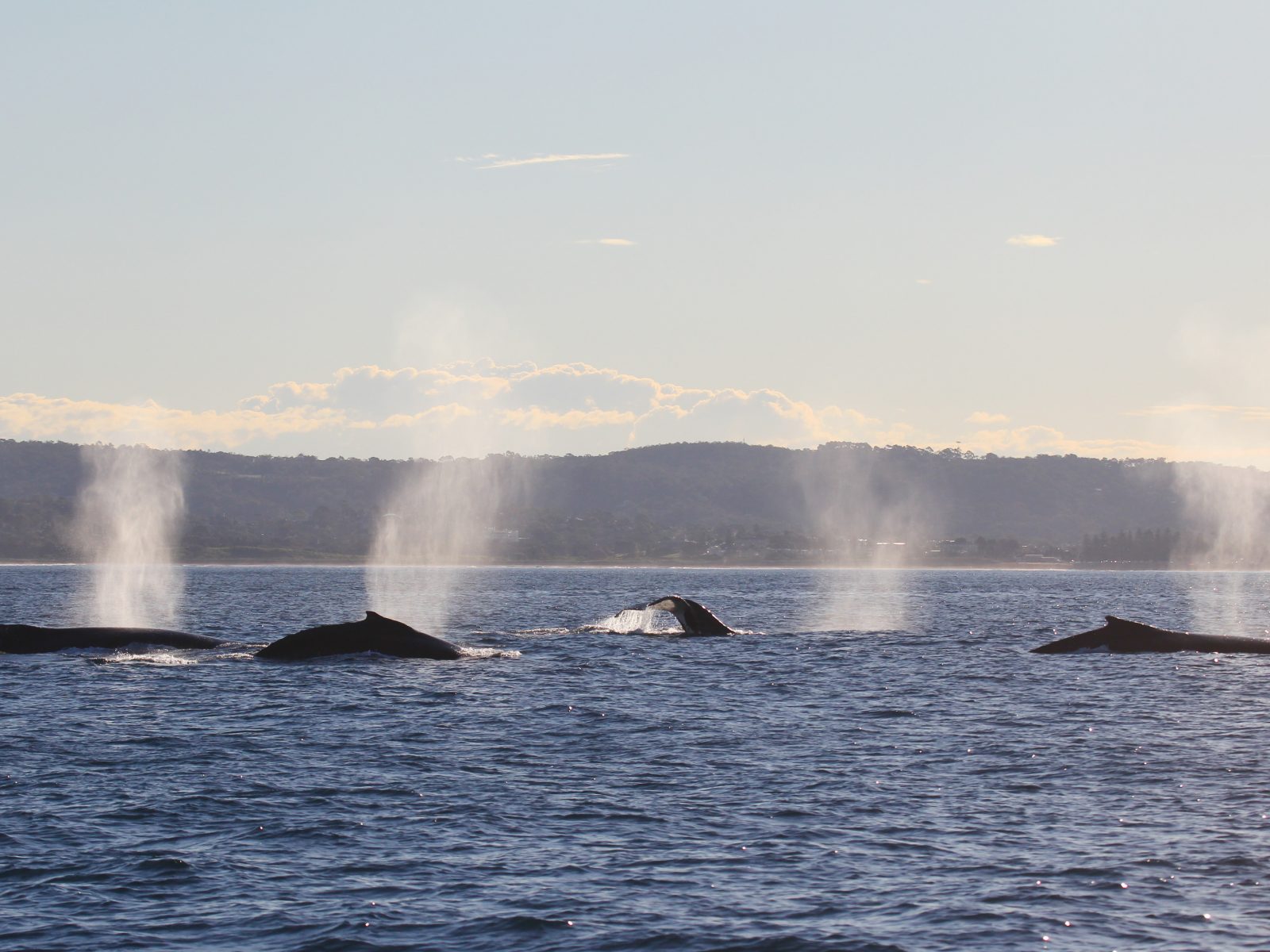The annual whale migration is certainly a site to behold. Each year, NSW national parks welcome many eager visitors who flock to some of the most scenic locations and headlands all along the coastline to catch a glimpse of these magnificent mammals as they glide past. Sometimes you may be lucky enough to see their spectacular breaches, fin waves or dramatic tail slaps that signifies to us that they’re there.
But did you know what the annual whale migration is actually all about? Once you know what’s really going on, it can make your whale watching experience even better.
Here’s the lowdown on the annual whale migration.
-
What?
The annual whale migration. Whales migrate because over time their feeding grounds and their breeding grounds have become separated. Now our whales undertake some of the longest migrations, between their food source and safe breeding areas, in the animal kingdom.
 Photo Information
Photo InformationNPWS / DPIE
-
Who?
The whales of course. Whales evolved from land mammals that lived in warm salty waters about 55 million years ago. They belong to the order of animals called cetacea, which also includes dolphins and porpoises.
Humpbacks are the main species you will see off the NSW coastline, as well as southern right whales, and sometimes even blue whales, minkes and orcas (killer whales).
Did you know? Over 50% of the world’s cetacean species are found in Australian waters.
-
When?
 Photo Information
Photo InformationHumpback Whales (Megaptera novaeangliae Cetacean)
Jonas Liebschner/DPIE
They start their swim north around May and June, and then start making their southbound journey from around August to November. The peak of the season is the around end of June and throughout July, when the highest numbers of whales can be seen from the NSW coastline. The whale watching season is getting longer because, thankfully, whale populations are increasing due to conservation efforts over recent years.
Did you know? Whales don’t sleep – it is more of a doze. Researchers believe they have the ability to switch off half their brain to relax, while the other half is thinking of breathing.
-
Where?
 Photo Information
Photo InformationKattang Nature Reserve
Rob Mulally / DPIE (2019)
The best land-based whale watching spots can be found in our national parks all along the NSW coast, stretching from Byron Bay in the north, to Eden in the south. Have a look at the best vantage points here or if you want to elevate your experience, go ahead and book a whale watching tour where you’ll be accompanied by one of our knowledgeable guides.
Remember: To always be aware of your surroundings as many coastal walks and vantage points have exposed cliff edges. Keep a safe distance – at least 5m – from edges and rock platforms.
-
Why?
 Photo Information
Photo InformationNacho Canepa via Pexels
So why are they doing this? Whales need to survive the very cold Southern Ocean by developing a thick layer of fat to keep them warm. They build up this fat from their food. However, newborn whales don’t have this thick layer and would not survive if born in the Antarctic. They need warmer water while they build up their insulation layer with the nourishment they get from their mother’s very rich milk. The whales start their swim north to find warmer waters in which to breed, and then start making their southbound journey with newborns in tow. The return journey is when you will often see them closer to shore, frolicking and suckling and taking their time with their babies as they’re in less of a ‘hurry’ than when they head up the coast
Did you know? Rock engravings and contemporary stories show a strong relationship between local Aboriginal people, whales and The Dreaming.












